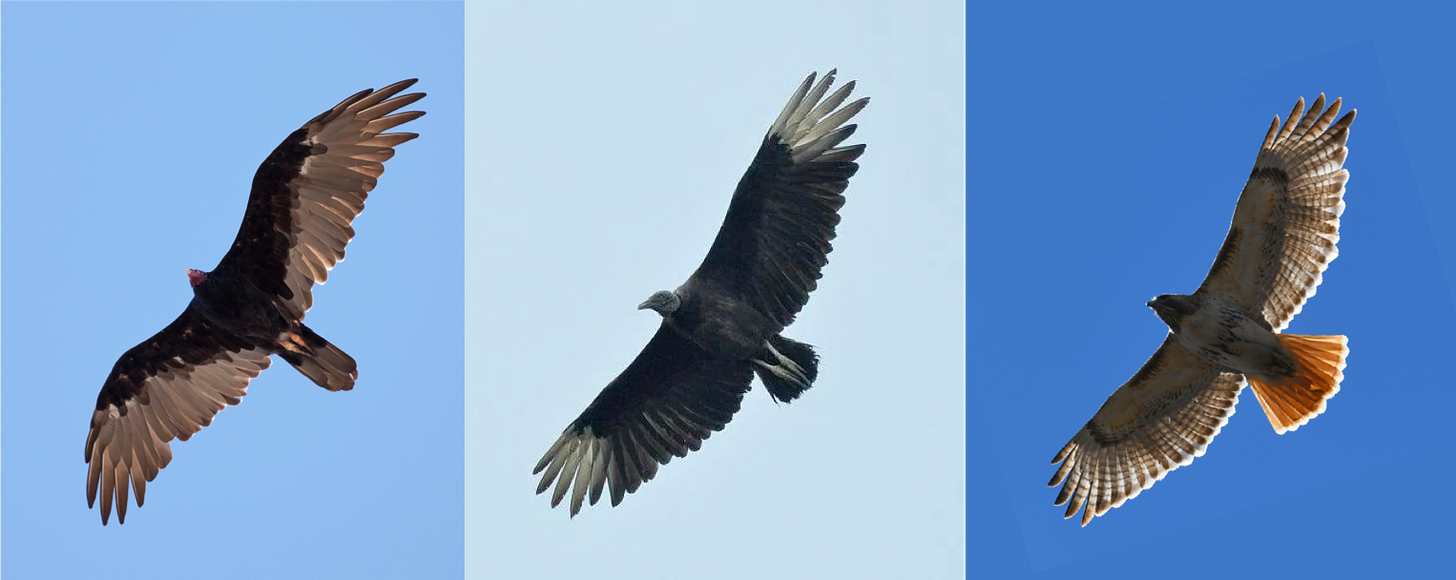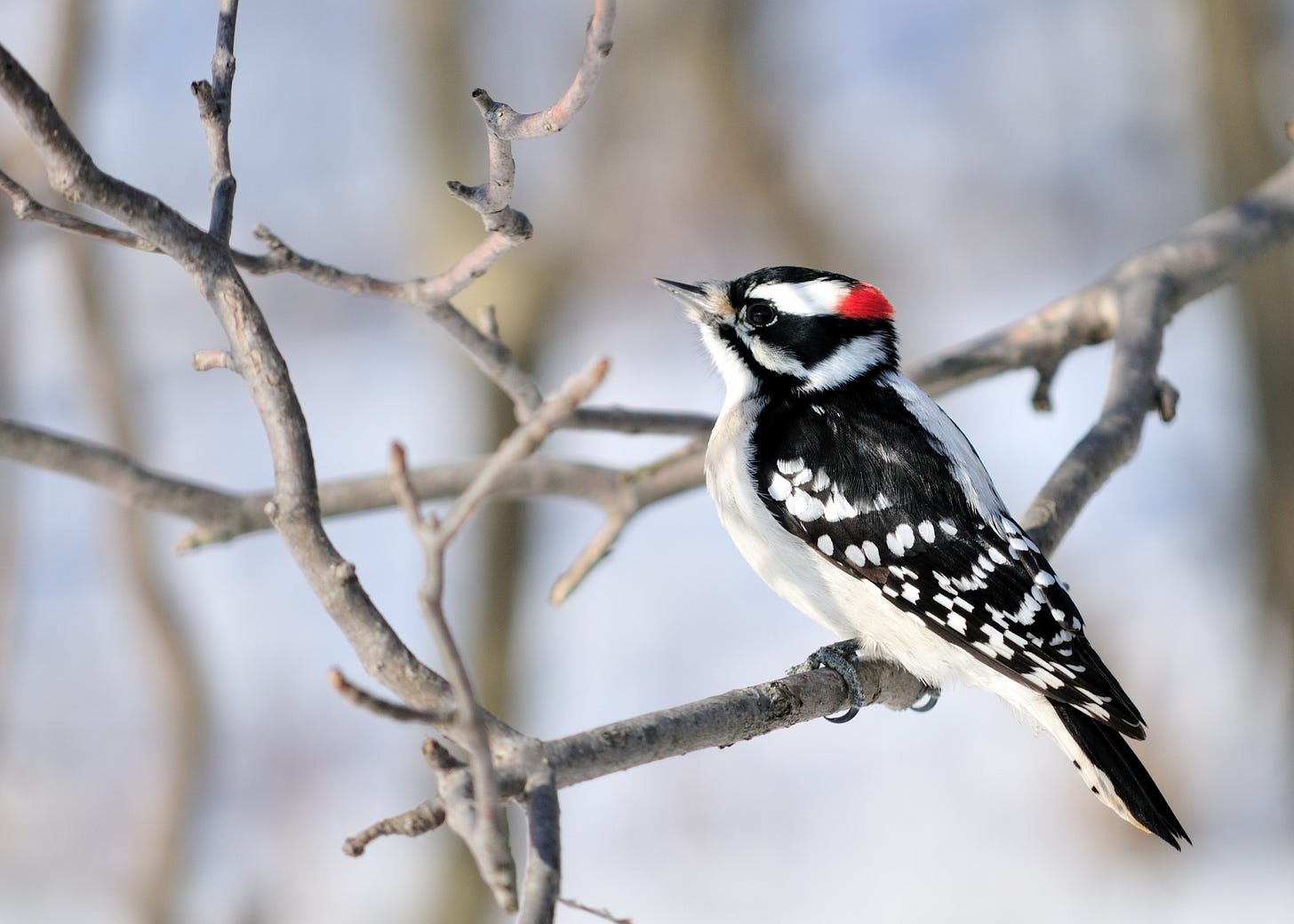Corporate humanoid [dead inside]: It’s almost Q3.
Source, Great Unity, god-babe MOTHER NATURE [whispered among crown shyness vaulting seedlings]: Current Japanese micro-season is Rotten grass becomes fireflies. As for McGolrick Park, perhaps New York City and even larger swathes of the eastern US, we notice—
MICRO-SEASONINGS
Fireflies emerge • Orange Day-Lilies peak • Eastern Kingbird • Fish Crows nest • Lingering Ovenbirds
Did we miss anything? We’ll declare this micro-season’s “official” name at year’s end.
The flowers, leaves, and tubers of Orange Day-Lilies are edible. The flower petals can be eaten raw in salads or otherwise cooked. The cooked flower buds, served with butter, reportedly taste like green beans
What the f*ck is a Fish Crow? Short story: Though less common than American Crows, Fish Crows live near water and caw like they’re sinus infected. Longer story in this Audubon article
And what about Crows vs. Ravens?! See-ye, see-ye!
JUNE 15, 2024 — SATURDAY
Conditions: Easy Breezy • Attendance: 70 • Vibrations: Oh So Quiet
Saturday birds: Blue Jay · Common Grackle · Chimney Swift · Laughing Gull (flyover) · Fish Crow (heard) … And the virtually always present in urban parks like McGolrick: Rock Pigeon, European Starling, American Robin, House Sparrow and Mourning Dove.
Pic of the day via @cbreens:
MICRO-LESSON: VULTURES
Like Kinglets or Nuthatches, it’s always comforting when you only have to memorize a handful of species per bird type. ‘Tis the case for US vultures. You’ve got your Black Vulture. You’ve got you’re Turkey Vulture. Ya Donezo.


Before we learn how to tell them apart, let’s first acknowledge the stinky, deceased elephant in the room: vultures, technically birds of prey, eat the decaying flesh of dead animals.
Chorus of kids: Ewww!
Your correspondent: Shut up, children! Vultures are sick! (In, like, the Californian radical/cool sense, bra.)
Sick Vulture Facts
- Vultures are—#relatable—sensitive creatures. Their keen eyesight, superior noses (rare in the bird of prey world), and, according to recent research, recognition of sounds associated with hunts, all help them find feeding opportunities
- A group of carcass-eating vultures is called a wake
- Vulture stomach acid is so butch that it can handle bacteria as wacky as anthrax. Bonus here is vultures remove bio-hazardous toxins from their environments
Identification from Below
Vultures are huge birds who soar like hang gliders. Other large birds like the common Red-tailed Hawk soar too. But, much like said gliders, vultures more delicately balance their wings as they surf warm waves of air.
Let’s also tell them apart via their different sizes, patterns and shapes. Notice:

Head — Vultures, unlike hawks, have small heads relative to their huge wings. Turkey Vultures’ heads are pink. Black Vultures’: black. Those colors can of course be hard to see if the vultures are way up high.
Plumage — Turkey Vultures’ coloring, as clubber Palmer remarked, give a T or V-ish shape. T or V for .. turkey and vulture. Yeah? Black Vultures are all black, ‘cept for white “fingertips”. Red-tailed Hawks can have variable plumages, but dark shoulders—see graphic here—are distinctive.
Tail shape — Blacks Vultures’ tails are shorter than Turkeys’. Red-tails’ tails are stubby and often fanned mid-soar.
Range — Turkey Vultures are the more common US vulture, especially because the Black’s range is limited to the south and east. Both are technically year-round New Yorkers, but experience and data (like this) show Turkeys to be more noticeable:


Bonus: California Condor
What about condors? Aren’t those vulture-y birds? They are! Condors and vultures are related. Condors are bigger. Also less common: the California and Andean Condors, both New World birds, are the only two condor species in the world.
In the US, there’s just the California Condor. That nearly extinct species is being actively re-introduced at specific sites in California and Arizona. Very rare to see one soaring beyond, and even within, those locations.
California Condors look a bit like Turkey Vultures, but are bigger, and their plumage shadings are inverted, giving condors a sort of a boney look. They also, for the sake of conservation science, sport alphanumeric tags on their wings.
Learn about Black Vultures here; Turkey Vultures here
Learn more about helping California Condors here
Andean Condors can rock wingspans as wide as 10 feet 🙇
There are 7 New World vulture + condor species. Most are findable in Central and S. America. View ‘em in this section
Old World vultures, including the bone-eating Bearded Vulture, are completely unrelated to New World vultures. They’re similar in appearance and behavior solely due to—science alert!—convergent evolution
Ruby-crowned and Golden-crowned are the only US Kinglets. Red-breasted and White-breasted and Pygmy and Brown-headed are the only US Nuthatches. We do love us some low-species-count bird types
ON NOTICE: DOWNY WOODPECKER CALLS
If you’re going to know any bird species by sound, for Mother Nature’s sake know the Downy Woodpecker, the country’s most common + smallest woody.

Loud, squeak-toy chips and downward trills have been especially noticeable in McGolrick Park lately. Besides the less common Hairy Woodpecker, no other bird sounds quite so squeaky. As we wrote here, these peckers are nationwide birds. So, wherever you are, dear reader, have a listen-out for these distinctive sounds.
Don’t forget to walk around RIGHT NOW and try to learn the sounds of the birds most common to US urban parks. If you’re just getting started, fear not—you already know these birds’ sounds to a degree—they’re buried in your subconscious
One of the first lessons new birders encounter is the famous Hairy vs. Downy Woodpecker debacle. The species sound similar and look exactly the same except A) Hairies are bigger B) Hairies have longer bills, about the same width as their skulls C) Hairies’ squeak-toy calls don’t descend
ANNOUNCEMENTS, REQS
Calling all NYC Aspiring Eco-Freaks
- Today, ‘til 6pm—Visit 625 Bergen Street (Farm.One NYC) for the second half of Nonhuman Teachers’ Kings County Fair, a “celebratory weekend of rare and unusual plants, esoteric botanica, delectable delectables & sappable beverages, printed matter, indoor hydroponics, and dunk tanks galore with some of the finest joy seekers.”
- Wednesday, June 19 · 7 - 10pm—More Nonhuman Teachers in the West Room of Nine Orchard for an “evening of all things chimerical from Precambrian protists to post-punk rockers.” Details here
Calling all Birdsmiths Wordsmiths
- Birding is poetry of motion. So why not try poetry.. of stillness.. onstage.. open mic-style.. at Newlab, on Friday, Jun 21, 2024 · 8:30am – 10:00am? Clunky prompt? We’ve done worse. Details here
Make your voice heard
- Tuesday, June 18 · 6pm—Two new nightclubs want to open across from Bushwick Inlet Park, an important Greenpoint habitat. Attend the next Community Board Meeting and enjoy the Parks and Recreation-style circus that is local politics. Get virtually involved here: bit.ly/nonightclubs. Email protectbip@gmail.com with questions. Follow inletangels for updates






